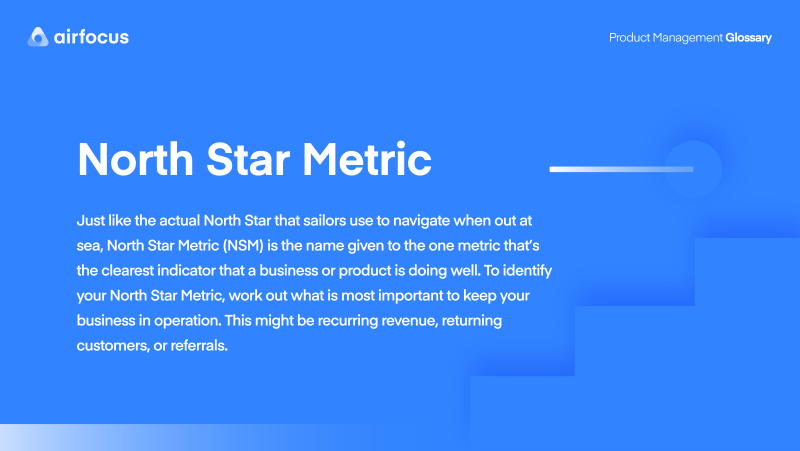North Star Metric - NSM
What is the North Star Metric?
North Star Metric definition
Just like the actual North Star that sailors use to navigate when out at sea, North Star Metric (NSM) is the name given to the one metric that’s the clearest indicator that a business or product is doing well.
When you identify the right North Star Metric and stick to it, you improve customer value and revenue. To understand why exactly, it helps to see examples of North Star Metrics in different companies...
What are North Star metric examples?
A North Star Metric varies from business to business: it’s all about what matters most to your business model, what customers want from you, and what keeps revenue coming in.
In practice, that might look like:
Number of goods sold each day for an eCommerce company
SaaS businesses may track usage data and daily active users
An online publication will want eyes on their content, by way of reading time
… and so on.
Your North Star Metric can then be used to improve other key metrics, like MRR.
The language app Duolingo bases its North Star Metric on badges earned by language learners. Duolingo discovered that the more users interact with the app, the more likely they will persevere and continue learning. So the company incorporated a ‘badge’ system and other milestone features to encourage learning and engagement.
When Netflix was a subscription-based DVD distribution company, they grew their NSM (retention) by targeting their most engaged consumers: those who queued three or more DVDs in their first month of joining.
With this particular demographic in mind, the team at Netflix developed product features and made the service more user-friendly. By doing this, Netflix’s North Star Metric grew from 60% to 90%, meaning that they increased the number of engaged consumers by 30%.
How do you identify the North Star Metric for your company?
How you identify your company’s NSM will depend on the nature of your business. That said, there are a few golden rules that all North Star Metrics should follow.
A North Star Metric must:
Result in revenue
Reflect the value of your customers
Be a way to measure progress.
It’s also best practice to use a metric that all company members can focus on.
Here’s a short exercise to identify for NSM:
First, write down everything that’s essential to keep your business operating and prioritize it.
Next, write down the KPIs and metrics you’re using to measure the top 3-5 things in that list.
Now ask yourself: which one metric stands head and shoulders above the rest? Is there one that’s most important or that encapsulates all others?
Prioritize your metrics — with your NSM at the top.
It might sound like a short exercise, but it can take lots of discussion to get right.
Be aware of 'vanity metrics', too. Make sure your NSM is revenue-producing. An example of a vanity metric is when a company's Facebook post gets 1000s of likes but nobody converts.

General FAQ

Glossary categories
Create effective product strategy

Experience the new way of doing product management








